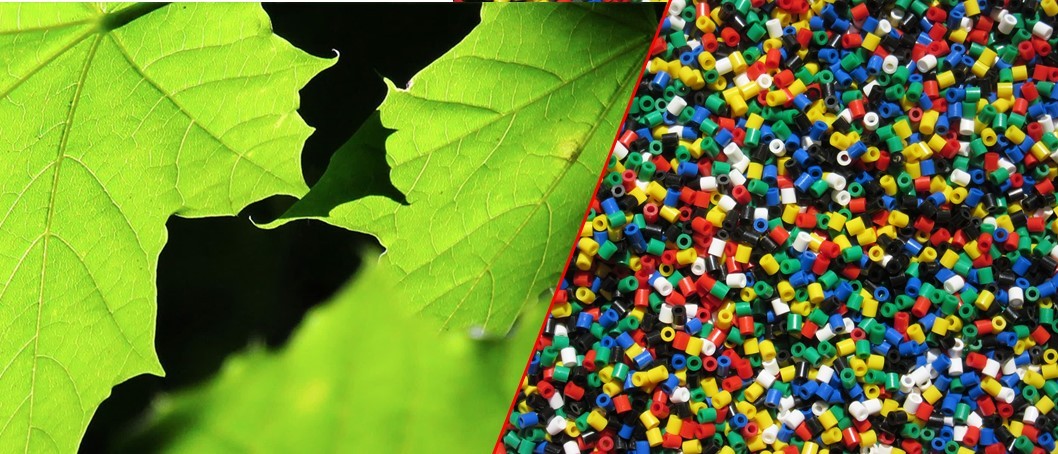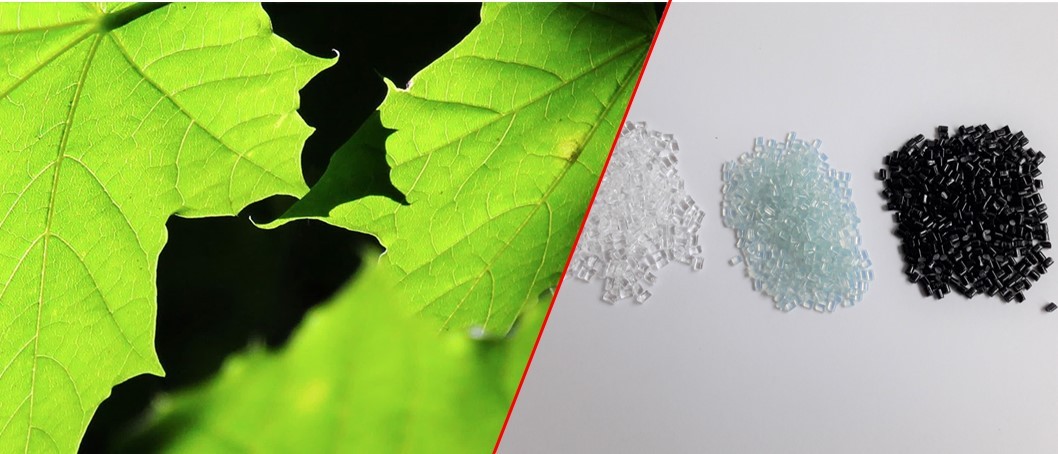Dyes and pigments
Colorants are one of the most common additives mixed into plastics. Especially in parts that are visible to the end customer and where color plays an important role for the design.
Dyes soluble in plastic only change the color, but not the transparency. They are primarily used for amorphous plastics, which are colorless transparent by themselves.
Pigments, on the other hand, do not dissolve in the plastic, but are only distributed in the material. Under a microscope, they can still be seen as small dots. The transparency of the component is reduced by the scattering of light. In the case of semi-crystalline polymers, which are already opaque due to the crystallites, this is irrelevant.
Pigments in high concentrations or together with mineral fillers can scatter so strongly that a completely covering nontransparent coloration is possible.
Coloring and laser welding
In laser welding, the coloring of the plastic is not only important for the design but also for the welding itself. The upper component must be at least partially transparent to the laser and the lower component must absorb the laser.
Since the lasers for plastic welding in the near infrared of the light spectrum are at non-visible wavelengths, the coloration for the eye and for the laser can be adjusted independently of each other.
Laser-transparent
Most polymers do not absorb the laser. The coloring of the upper part is not necessary for welding. However, if the design specifications require a color, a colorant must be selected that still allows the laser to pass at infrared wavelengths. Such dyes are usually available without any problems.
Even black in a laser-transparent version is offered that cannot be distinguished from normal black by the eye:

Critical are nontransparent colors such as a pure white as for example at household appliances. The scattering of the laser beam becomes too strong and can no longer reach the lower part for welding.
Laser-absorbing
For the absorption of the laser a colorant must be added. Carbon black is most commonly used for this purpose. It absorbs the laser beam in the surface layer of around 100 micrometers even in small concentrations of less than 1%.
In order not to obtain a completely black component, the carbon black can also be mixed with white mineral pigments for a more or less light grey. Or mixed with another colorant to obtain a darker shade of a color.
Light shades are not possible based on mixtures with carbon black. It is necessary to use a more special laser-absorbing colorant, which is also readily available.
Transparent laser-absorbing colors are difficult. There are some special dyes for this purpose, but they all have a slight residual color. They are relatively expensive and the penetration depth of the laser is usually much deeper than with carbon black up to a few millimeters.
There is currently no completely colorless transparent laser-absorbing dye available. In these cases, the special process with longer laser wavelengths may be used.
Apply liquid dye
Instead of mixing the colorant into the plastic, a dye can also be applied to the surface of the part. However, the applied colorant must not act as a separating layer between the plastic melts to prevent a joint. The application of the colorant is also an additional step in overall process. Often, it is also based on solvents and needs drying times, so that it is less suitable for mass production.
For laboratory use, Clearweld® from Gentex (distributed by Crysta-Lyn), which can be applied with pens or dispensers, has proven very helpful. The yellow-greenish color disappears during the welding process and leaves a colorless joint.

